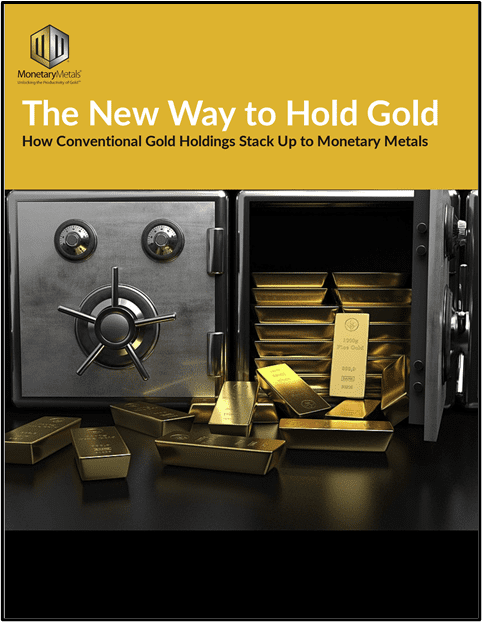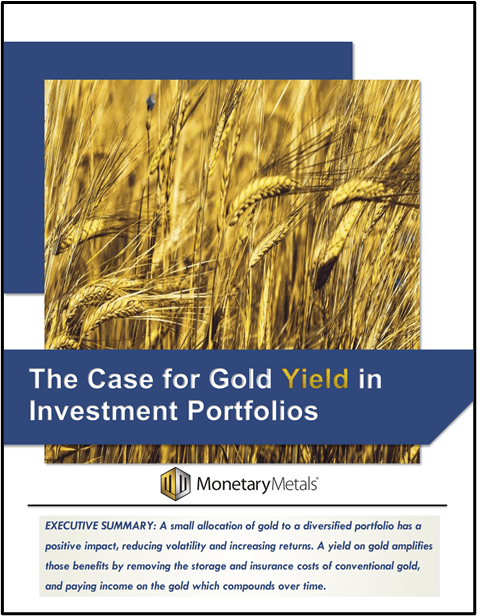When we saw the following comment from a prominent otherwise-free-marketer, we knew it was time to write this article.
“…the value of the Fed’s “liabilities”(which are so in name only) [scare quotes and parenthetic comment in original] bears only a very loose connection to the value of its assets.”
This statement seems so simple. The Fed is the issuer of America’s and the world’s reserve currency (mainstream pronunciation “muhn-ee”). Observing that this paper has value in the market, Fed apologists (and critics alike) imbue it with an almost mystical power: it has value because the government says so (and because the government has nuclear bombs). Therefore, it will always have value (though declining in inverse proportion to its rising quantity).
Oh, and let’s add one more pseudo-argument. Many critics have prematurely predicted its collapse. To the Fed’s apologists, this by itself practically proves that the dollar cannot ever collapse.
Ergo there is no need to compare the Fed’s assets to its liabilities. Or its interest revenues to its interest expense. Or to perform any analysis whatsoever. Nothing to see here, move along folks.
An idea that derives from this view is: the Fed is printing. And that the stuff it prints is: money. The moneyness of this money would seem to be exogenous, that is, not a function of the Fed’s assets. And therefore to be taken for granted, like gravity, a nature-given fact.
Therefore, in this paradigm, the Fed cannot become insolvent. And therefore the Fed’s liabilities don’t matter. That they aren’t “really” liabilities, nothing more than bookkeeping entries.
There is a lot to unpack in that seemingly simple otherwise-free-marketer quote. To do so, we need to ask a question.
Does debt matter?
To the bookkeeper, liabilities are just numbers in a ledger. And to many academic economists, central bank liabilities are base money. Like a bookkeeper, they just focus on the statistics of how many units it has created, and at what rate. To them, the Treasury’s debt is just an abstraction with no connection to reality.
The bookkeeper at least, may—perhaps—be excused. His job is not to think about the nature of the firm, much less monetary science. The academic economist, on the other hand, should know better. If he holds that the Fed’s debt bears only a very loose connection to its assets, then this reveals that his theory bears only a very loose connection to reality! We are not writing this to single out anyone, or make an issue out of a person. It is to shine a spotlight on a glaring flaw in modern monetary economics. This sort of economics does not bother itself to examine the individual economic actor.
If it did, economists would have to ask why would any individual actor willingly give his capital to the government (as opposed to taxation)? People not only willingly buy government bonds. They do so enthusiastically.
They fork over their hard-earned capital because they expect to be repaid. In other words, because they believe it’s a real debt. If they did not, they would not willingly pay for the government’s seemingly free largesse. They would not give their money, except taxes paid under duress.
The government’s liabilities are the assets of everyone else: individuals, pension and insurance funds, commercial banks, and the Federal reserve. All of these parties lend to the government, though often without knowing.
Yes, the debt of the Federal Reserve does matter
This is one way to understand that, yes, the value of the Fed’s assets and the value of the Fed’s liabilities matter. The Fed’s assets are the Treasury’s liabilities, the debt of the government (and of other parties to some extent). The Fed’s liabilities are the currency in circulation and bank reserves. The value of the commercial banks’ assets and the value of the commercial banks’ liabilities also matter. Their assets are the Treasury’s and the Fed’s liabilities (plus corporate, business, and consumer borrower’s liabilities). Their liabilities are what most people use as money, bank deposits.
Would anyone argue that it’s OK to hold a deposit at a bank whose assets collapsed in value? To lend to a bank which has made bad loans which were defaulted?
Another way to see the value of an asset is to look at its cash flow.
It is possible to borrow to fund one’s purchase of bonds. Individuals may not do that so much (though they’re probably doing it more and more in the post-2008 era of ultra-low rates), but banks do.
And the Federal Reserve does it.
Government bonds comprise most of the Fed’s assets. To finance this portfolio of bonds, the Fed borrows. It borrows from the people with its issuance of currency. So long as interest rates are above zero, issuance of currency is a net benefit to the Fed, because the Fed pays no interest on dollar bills in your pocket (it will become a crisis when the interest rate plunges below the waterline of zero).
However, there is only about two trillion dollars of paper currency outstanding. Since the Fed has over eight trillion dollars’ worth of assets, its currency issuance only finances about a quarter of the total. The majority has to be financed by borrowing from financial institutions.
Everyone’s a creditor to the Federal Reserve
Most people don’t keep the bulk of their savings in paper dollar bills. They deposit it in a bank. The bank uses those deposits to buy a variety of assets, including government bonds. But it keeps some as reserves held at the Fed.
Not only are the people financing the Fed’s purchase of government bonds when they hold paper dollar bills. They are also financing it when they deposit dollars in a bank.
The Fed currently pays banks 0.15% interest on reserves they hold with the Fed. This is above the interest the Fed earns on all of its short-term Treasury bills out to 1 year. 2-year Treasury’s pay 0.25%, so the Fed can make a (thin) profit margin on those, and increasing margins out to the 30-year which pays 1.93%.
There is no guarantee that the Fed can always pay a lower rate of interest on its liabilities, than the rate it earns on its assets. If its interest expense rises above its interest revenues, the Fed will get into big trouble.
What will lead to runaway Hyperinflation?
Suppose at some time in the future, the Fed is earning a weighted average of 0.5% interest on its portfolio which by then has ballooned to $10 trillion. But it is paying 0.75% interest to fund this. So it is losing 0.25%. Across a portfolio of $10 trillion, that amounts to an annual loss of $25 billion.
Up until 2021 (and likely for years, yet), the Fed is borrowing to finance bonds that pay greater than its borrowing costs. Fed critics have been calling for hyperinflation at key steps along the way. But what we’re discussing in this article is something completely different.
The Fed, in the scenario we described, will be borrowing not to finance good assets, but to pay its negative cash flows. That is, it will add $25 billion to its debts, but it won’t be adding any assets or revenues. The interest on that $25 billion, at 0.75% is around $200 million. Next year, if nothing changes, the Fed will have to add $25.2 billion.
This is an exponential growth curve that will run away to hyperinflation.
So we see that the value of the cash flows from the Fed’s liabilities have a very tight connection to the value of the cash flows from its assets. Cash in must exceed cash out, or else.
This leads us to one puzzling question. What makes it possible for highly educated economists not to see this? It’s not that complicated, yet some very smart people don’t get it.
The importance of redeemable currency
It is because President Roosevelt made the Fed’s and the banks’ liabilities irredeemable in 1933.
Until his diktat, every bank note and bank deposit began life as someone bringing gold to the bank. The paper issued by the bank was proof of the deposit, and stated the terms under which they could demand repayment of their gold.
NB: demanding that the bank give you your gold back was not the same thing as exchanging the paper note for gold, with a third party. The bank was contractually obligated, on pain of bankruptcy, to redeem paper for gold under the terms of the contract (e.g. bank notes were redeemable on demand).
Redemption was a contraction of credit, which was at the discretion not of the banks but of the note holders. If they did not like the interest rate, or the risks, they could demand their gold back. Banks offer convenience and other services, which in normal times, people prefer to the gold coin held in hand. But in abnormal times, they redeem and count it an upgrade in their position.
After the crash of 1929, America experienced abnormal times. There were a few years of flailing and policies that made it worse (e.g. the Smoot-Hawley Tariff). And then Roosevelt was elected. He wanted lower interest rates, and an end to runs on the bank. He accomplished both by declaring gold redemption clauses void, and by prohibiting the possession of gold.
Although gold was relegalized in 1975, the consequences of Roosevelt’s decree are still felt to this day. The most conservative savers were forced to buy government bonds. Soon enough, they did Orwell proud and defined the government bond as “risk free”.
And they defined the Fed’s liability as “money”. It is indeed a medium of exchange, but not a final payment, not an extinguisher of debt. It’s just that the law rendered it impossible to make or demand final payment. If you walk into a bank today, present a twenty-dollar bill and demand they redeem it, they will look at you like you have horns.
Prior to 1933, of course, any bank teller would know exactly what you wanted. The bank would take back the bill (bill being a word for credit) and pay out the money, the (just under) one-ounce gold coin.
The Difference between Redemption and Exchange
Today, of course, you can take (just over) 90 twenty dollar bills to a third party who specializes in bullion products. You can tell them you want to “buy” a one-ounce gold coin, and exchange the 90 pieces of paper for it. At least, you can if the price does not change between the time we are typing these words and the time you walk into the bullion dealer. The dealer is under no obligation to accept any particular price, or indeed to make the exchange at all.
Buying gold from a third party is not a contraction of a credit. It is a simple swap. One party gives his dollars and gets gold in return. The other gives his gold, and gets dollars in return. This transaction has no effect on the monetary system.
The Effects of Irredeemable Currency
Leaving aside the temporary (42 years) criminalization of gold, Roosevelt’s edict had four effects. One, the Fed’s and the bank’s liabilities are no longer redeemable. Two, the saver is disenfranchised, as his preferences no longer have any effect on the monetary system. Three, all roads that once led to gold were reengineered to lead to the Treasury bond.
Finally, the government and the banking system no longer had to think about whether or not they could pay their debts upon the demand of their creditors. The very irredeemable paper in which payments are made is backed by the very debts that creditors would want to redeem! In other words, the monetary system became circular, self-referential.
This is not an improvement, folks. This is a material adverse change.
By making things worse in every way, and not better at all, they certainly could not have upgraded credit notes to proper money. They can merely rely on the fuzzy understanding of most people, and many economists.
To define money as a medium of exchange may be good enough for explaining it to a child. But it is not nearly sufficient for studying the monetary system. Notwithstanding certain proclamations by certain otherwise-free-marketers.
Monetary Metals is Hiring! And you could win an ounce of gold for referring us our next hire! Learn more here.
Additional Resources for Earning Interest in Gold
If you’d like to learn more about how to earn interest on gold with Monetary Metals, check out the following resources:
In this paper, we look at how conventional gold holdings stack up to Monetary Metals Investments, which offer a Yield on Gold, Paid in Gold®. We compare retail coins, vault storage, the popular ETF – GLD, and mining stocks against Monetary Metals’ True Gold Leases.
The Case for Gold Yield in Investment Portfolios
Adding gold to a diversified portfolio of assets reduces volatility and increases returns. But how much and what about the ongoing costs? What changes when gold pays a yield? This paper answers those questions using data going back to 1972.


 :
:




Seems fairly simple.
I’m curious if your statement that central bank negative cash flow will lead to hyperinflation is meant as an absolute? Or is it meant as just one of several potential paths to a hyperinflation outcome?
Best.
Hello Brian,
Thanks for reading and for your comment. I think the best way to think about it is that negative cash flow at the Central Bank is a marker on the road to hyperinflation. They could reverse course, but if they don’t, the destination is certain.